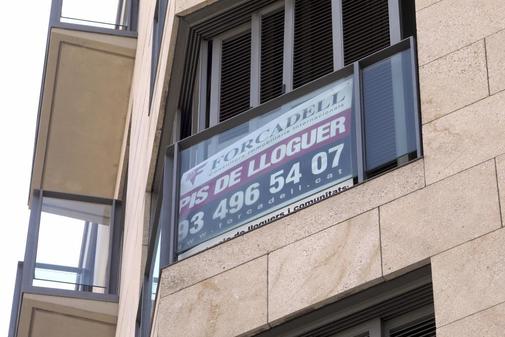- The brick cools: the sale of homes suffers its biggest fall since the crisis
The price of renting homes in Spain is 10.6% more expensive than before the housing bubble burst and the crisis broke out , with more expensive prices in all the autonomous regions of the country compared to 2007 with the exception of Navarra.
Only this regional community registered prices in 2018 slightly lower than those of twelve years ago, 0.8% cheaper according to that component of the CPI. The prices registered in Catalonia (15.4% more expensive), Cantabria (14.7%), Balearic Islands (14.6%) and Galicia (13%) exceed the average, reports Europa Press.
Faced with this, home ownership has not reached pre-crisis levels, despite a significant increase since recovery. Although from 2014 to 2018 the price has increased by 23%, this level is still 21% lower than in 2007.
More rent
This is stated in the last monthly document disclosed by the BBVA Foundation and the Valencian Institute of Economic Research (Ivie), which highlights the increase in the percentage of households residing in rental housing in all autonomous communities.
According to data from the INE Family Budget Survey, since 2007 the percentage of households residing in rented housing has increased by 4 percentage points, to stand at 18% in 2018 (16.8% in the case of rent at market price).
At a regional level, these differences reach almost 17 points of difference, among the communities with the greatest rental weight - Canary Islands (27.8%), Balearic Islands (27.7%), Catalonia (24.9%) and Madrid (23 , 3%) - and those where this option has a lower incidence, such as Extremadura and Castilla-La Mancha (10.9% both) and Cantabria and the Basque Country (11.6% both).
77% LIVE IN PROPERTY
Despite this, the report highlights how Spain stands out in the European context for presenting a higher percentage of homes that reside in homes owned, 77.1%, compared with 69.3% of the European Union average and 66, 1% of the eurozone.
BUY MORE AFFORDABLE FROM THE END OF THE 'BOOM'
The report also highlights the improvement of accessibility to home ownership in Spain since the beginning of the crisis, because if in 2007 it was necessary to allocate 13.6-year income to pay for a free home, in 2018 this indicator has fallen to 9.7 years
While per capita income has increased by 8.8% in those years, the price of housing has fallen by more than 20%, with the Balearic Islands being the community where more effort is needed to purchase (13.3 years), followed by Madrid (12.1) and the Basque Country (11.6), compared to La Rioja (6.5 years).
For rental housing at market price, the proportion of households that allocate at least 40% of their disposable income to housing reaches 43%, while in the EU this affordability rate remains at 28%. In the case of rental housing at a reduced or assigned price, the rate is lower in Spain (10.6%) compared to 13.6% in the EU.
According to the criteria of The Trust Project
Know more- Spain
- Balearics
- Cantabria
- Madrid
- Basque Country
- Catalonia
- The Rioja
- Estremadura
- Navarre
- European Union
- Galicia
- Denmark
- Castilla la Mancha
- Canary Islands
- Germany
- living place
- economy
- Mortgages
Tourism Two out of three tourists from Valencia and Alicante are already staying in P2P apartments
The hotels advance their summer 'sales' to fill rooms
Holidays Labor calendar 2019: holidays and bridges

